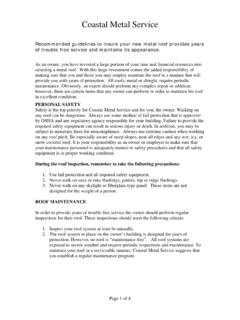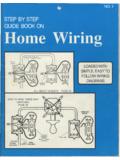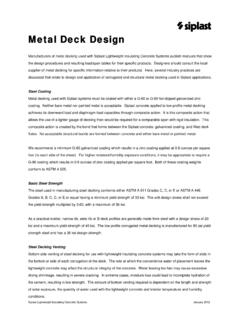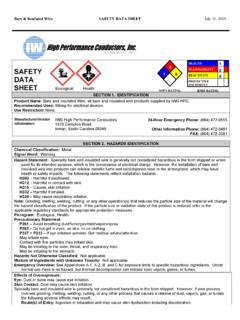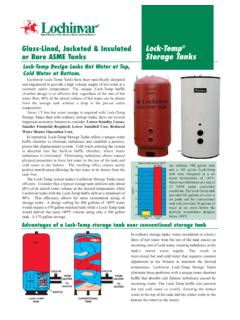Transcription of Challenges in bare-die mounting
1 Challenges in Bare Die mounting Larry Gilg Die Products Consortium Austin, Texas Abstract Traditionally, the evolution of advanced IC assemblies has been due to defense and aerospace applications, where reliability, size and weight were at a premium, and cost was a secondary consideration. In the 1980's, high performance computing became the advanced packaging development stimulus. That world changed again in the late 1990's with the emergence of ubiquitous digital content, providing impetus to the consumer markets of digital cameras, cellular phones, portable computers, PDAs and other similar high volume applications; these have now become the driver for advanced assemblies of semiconductors. Assemblers of state of the art consumer products are developing sophisticated packaging and interconnect approaches that more and more rely on the use of die products for these types of applications.
2 Die products are defined as bare die, bumped die or wafer level packaged die that change the overall footprint on the mounting substrate when the die size changes. This paper reviews several of the die products technologies, and outlines mounting Challenges to their use. Introduction Bare die mounting on multi-device substrates has been in use in the microelectronics industry since the 1960s. The aerospace industry's hybrid modules and IBM's Solid Logic Technology were early implementations that were developed in the 1960's. The technologies progressed on a steady level until the mid 1990's when, with the advent of BGA packaging and chip scale packages, the microelectronics industry started a wholesale move to area array packaging.
3 This paper outlines the Challenges for both traditional wire-bond die attached to a printed wiring board (pwb), to the more recent applications of bumped die attached to a high performance substrate. Die Product Technologies The several technologies that are considered die products are bare die with aluminum wire bondable I/O and power pads, bumped die with interconnections structures on the I/O and power pads, and wafer level packaged die that have a relaxed pitch,, mechanical protection on the surface of the die, optional rerouting of I/O and power pads, and formed with interconnection structures on the I/O and power pads. These are termed die products because they are sold to customers as a product and are available through normal IC distribution channels.
4 Bare Die The most readily available form of die products are termed bare die. These die are identical to the die that are used in the vast majority of single chip packages today as they are wire bonded to a lead frame or interconnecting substrate. The use of wire bonded die mounted directly to the pwb is termed chip-on-board, (COB). COB is the most mature and largest part of the bare die market. Chip on board technology is characterized by the following factors: Bare die mounted on interconnecting substrate or pwb Die are mechanically attached to the substrate using conductive or non-conductive epoxies Die are electrically connected to the substrate using wire bonding Die are encapsulated with a protective shell Figure 1 shows a pwb with 4 chips mounted directly on the board.
5 Figure 1: Bare die mounted directly on the surface of low cost laminate substrates is the highest use of bare die in products presently. The COB assembly process consists of three basic steps; die attach, wire bond and encapsulation. Figure 2 shows a schematic cross-section of the COB assembly. Die attach provides mechanical adhesion of the chip to the intended substrate and requires an adhesive application followed by precision chip placement; then curing of the adhesive. Once firmly in place the wire bond process electrically connects the die bond pads to the associated wiring pattern on the substrate. The wire bond machine welds fine wires, typically of Al or Au, between each pad on the chip and the appropriate pad on the substrate.
6 Wire bonding demands clean pads on both the chip and the substrate to ensure strong bonds as well as high production yields. Finally, encapsulation protects the die and bond wires from mechanical damage during handling and additional processing. In some cases, particularly for system in package applications, the encapsulation also provides the finished surface for component marking. Encapsulation employs either liquid dispensing or transfer molding depending on the specific application. Figure 2: Schematic cross-section of a COB mounted die. Designing a COB assembly process sequence can be critical, particularly for applications where die products and surface mount (SMT) components are combined on a single substrate.
7 In principle, the COB process may either precede or follow the SMT assembly process. Generally however, SMT processing first provides a simpler process flow particularly if the COB process employs a good cleaning process. A process step such as plasma cleaning to prepare the bonding surfaces is recommended. Process characteristics and considerations for COB assembly are detailed below and provide specific information for understanding, selecting and specifying the COB Cleaning Wire bonds will exhibit low yield and poor reliability unless the surfaces are clean when bonding occurs. Until recently, there was little consideration given to a cleaning step specifically designed to improve the yield and reliability of wire bonds.
8 The high-reliability hybrid industry has pioneered the use of molecular cleaning methods before bonding. Although some contaminants can become chemically bound to bond pads and thus require cleaning at the wafer level, most bondability problems are caused by organic contaminants, which may be effectively removed with plasma cleaning gases, such as Oxygen or Argon, as well as the simpler UV-ozone approach, applied at the die packaging level. In one study2 a few angstroms thick film of carbon was found to impair bondability, whereas a cleaned gold film (<1 carbon) was reliably bonded at 150 C, which is a low temperature to be used in thermosonic bonding. Figure 3 shows a typical yield curve for plasma vs. non-plasma cleaned surfaces.
9 It portrays the situation with wire bond defects vs. energy level for cleaned and uncleaned surfaces. 2. Figure 3: Graph depicts number of wire bond defects as a function of energy level for both plasma cleaned and uncleaned surfaces. (Courtesy of Techlead Corporation). Visual Inspection The quality and yield of a COB process is dependant on good manufacturing practices, and visual inspection is critical to success. The interconnecting substrate, die attach, wire bonds, and encapsulation defects may all be detected by visual inspection, including those that would not be detected by other means, such as electrical testing. Die Bonding If the die are to be interconnected to the substrate via wire bonds, the die is first attached with the backside to the substrate by a suitable adhesive and the wire bonds are then made.
10 Die bonding adhesive requirements include high adhesion, high thermal conductivity, high electrical conductivity and acceptable process temperature. The most common die attach material is a silver-based epoxy, but other materials are used, including silver-glass pastes and liquid solder, employed most often for high-power applications. Table 1 shows typical die attach materials and compares advantages and disadvantages of each3. Table 1: List of die bonding materials and summary of advantages and disadvantages of each. Bonding Materials Advantages Disadvantages Organic Adhesives Low processing temperature Poor thermal stability Metal-filled epoxies Stress relief, low cost Low thermal conductivity Glass adhesives Good thermal stability High processing temperatures Soft solders (Pb-Sn, Pb-In) Stress relief, low cost Thermal fatigue, creep Hard solders (Au-Sn, Au-Si, Au-Ge) No thermal fatigue, High strength No stress relief, High cost Dispensing, stencil printing or pin transfer of adhesive to the substrate may be used depending on die size.
